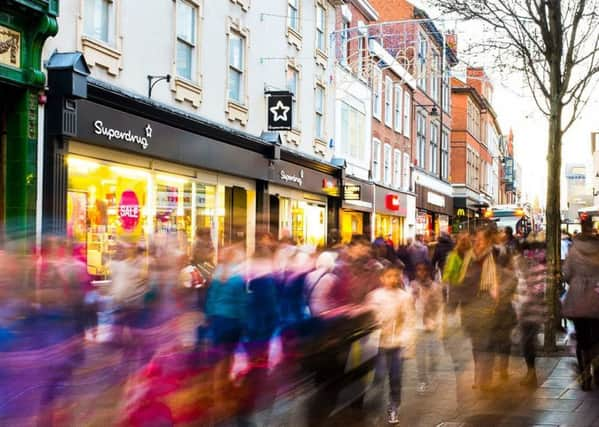Consumer confidence on the rebound says Danske report


The Danske Bank Northern Ireland Consumer Confidence Index registered a reading of 142 in the first quarter of 2018.
This represented a significant increase compared with the final quarter of 2017 when the index stood at 123. It was also slightly higher than the 141 posted in the same period last year.
Advertisement
Hide AdAdvertisement
Hide AdCommenting on the latest figures, Danske Bank Chief Economist Conor Lambe said that consumer confidence rebounded in the first quarter of 2018 following a disappointing end to last year.
“Compared with the last quarter of 2017, consumers started this year feeling more confident about their current financial position, how they expect their financial position to change, their job security and the amount they expect to spend on big ticket items”, he said.
“Eighteen per cent of consumers highlighted low interest rates as the factor that had the biggest positive impact on their confidence levels, while 10 per cent signalled that rising house prices made them feel more confident. However, despite the sharp rise in our consumer confidence index, almost 40% of people weren’t sure which individual factor had the biggest positive impact on them.
“As has been the case for a number of quarters now, more than 30% of consumers we surveyed continued to identify political uncertainty and the lack of an Executive as the factor that had the largest negative impact on their confidence levels.”
Advertisement
Hide AdAdvertisement
Hide AdThe latest data showed that men felt more confident than women with regards to their current financial position. Just over a fifth on men (22%) felt better off than they did a year ago, compared with 16%of women, while 22% of women felt worse off than 12 months ago, compared with 19% of men.
The component of the index addressing expectations of how their financial position will change over the next twelve months increased over the quarter and over the year.
“The latest data shows that inflation in the UK fell from 3% in December 2017 to 2.5% in March 2018,” said Mr Lambe.
“This lower rate of inflation is good news for consumers as it likely signifies the early stages of the household spending squeeze easing.
Advertisement
Hide AdAdvertisement
Hide Ad“However, a word of warning still needs to be sounded. Households are likely to continue to face some pressure as any returns to positive real wage growth are expected to be modest. While consumer spending growth rates in the province are expected to rise slightly, they are forecast to remain below 1% in 2018 and 2019.”
The part of the index based on job security posted a first quarter increase reflecting the generally positive feeling around employment.
Full-time workers felt more optimistic about their job security than part-time workers, with 21% of full-time workers expecting to become more secure in their job over the next year compared with 17% of part-time workers.
Only 6% of full-time workers thought their job security would deteriorate, but the proportion among part-time workers was 11%.
Advertisement
Hide AdAdvertisement
Hide AdWhile the majority of respondents didn’t expect their job security to change, some differences in the size of the majority existed at a regional level. Three quarters of respondents in South region, and 76% of people in West region expected their job security to remain the same.
In Belfast City and North region, the proportion was lower at 64% and 66% respectively.
The sub-index on the amount consumers expect to spend on high value items, such as furniture and holidays, over the next 12 months registered a reading of 148 in the first quarter of 2018.
This was higher than the 130 in Q4 2017 and the 146 in Q1 2017.